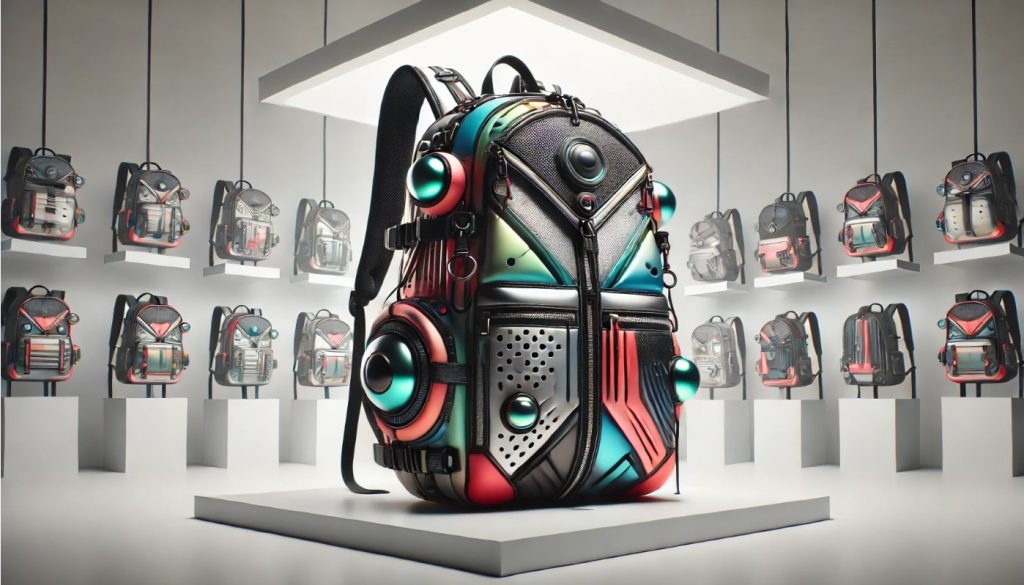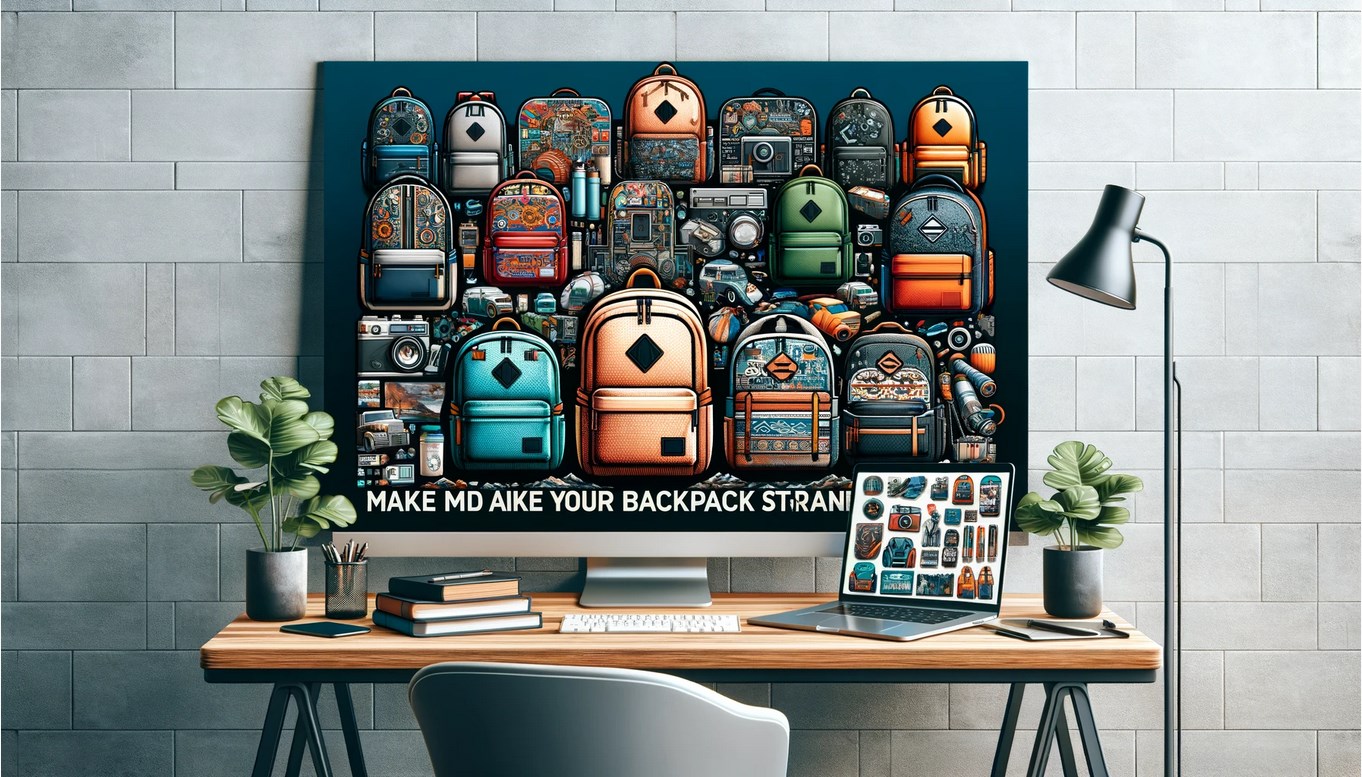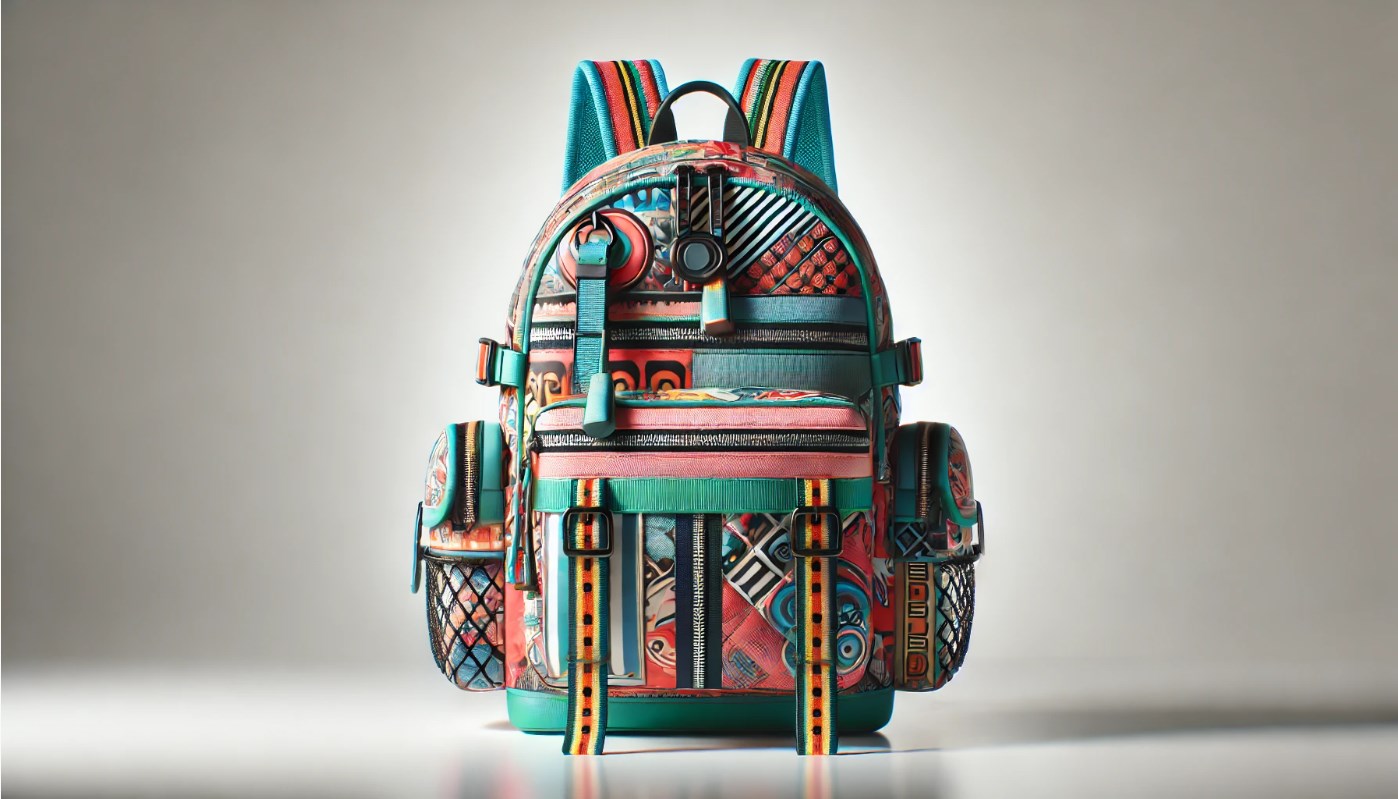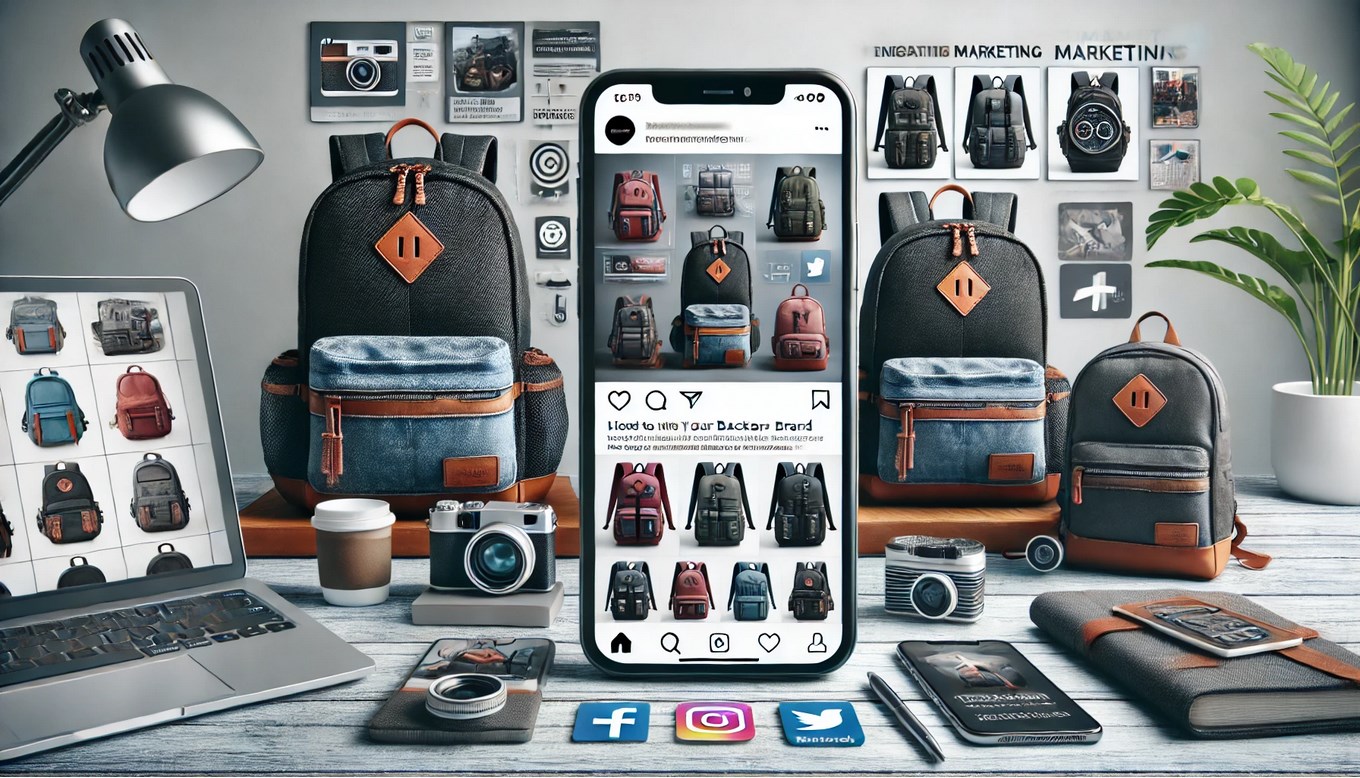The backpack market has seen a tremendous evolution over the years, driven by changing consumer needs, advancements in technology, and the rise of sustainability. Today, designing a standout backpack requires a combination of innovation, style, and functionality. With an ever-growing number of brands and products on the market, it’s crucial for backpack designers to create unique products that capture the attention of consumers and stand out amidst the competition. Whether you’re an established brand or a new designer, the following tips will help you craft backpacks that not only look great but are also functional, durable, and aligned with the latest trends.
Modern Consumers
The Desire for Personalization
In the age of individuality and self-expression, consumers are increasingly looking for products that reflect their unique tastes and personal style. Personalization plays a key role in standing out in the crowded backpack market. Customization options allow customers to feel connected to the product, giving them a sense of ownership and pride in their purchase.
When designing backpacks, consider offering customization options such as:
- Monograms or Initials: Small, subtle personal touches like embroidered initials can make a backpack feel more personal.
- Patches and Decorative Elements: Allowing consumers to add or swap patches or charms offers a fun way for them to create a backpack that matches their personality.
- Color and Material Customization: Offering a range of color options and materials can cater to diverse tastes and preferences, making your product more versatile and appealing.
Personalized backpacks are particularly attractive to younger consumers who are drawn to products that reflect their identity, and they can help your brand stand out as one that values individuality.
Functionality and Practicality
While style is important, modern consumers also expect their backpacks to be highly functional. The practicality of a backpack can make or break a sale, so ensuring that your design is not only fashionable but also efficient is crucial. Consumers want backpacks that provide easy access to their belongings and offer a high level of organization, comfort, and durability.
Focus on incorporating these functional elements:
- Multiple Compartments: Well-organized compartments for laptops, water bottles, pens, and other accessories help keep the user’s belongings organized.
- Tech-Friendly Features: Adding features like USB charging ports, laptop sleeves, and headphone cable management can make the backpack more appealing to tech-savvy consumers.
- Ergonomic Design: Well-padded straps, breathable back panels, and adjustable straps are essential for comfort, especially for users who carry heavy loads.
By focusing on the functionality of your backpack designs, you cater to the practical needs of your customers, ensuring that your products are both stylish and functional.
Eco-Conscious Consumer Preferences
With sustainability becoming an increasingly important factor in purchasing decisions, it is essential to consider environmentally friendly materials and processes when designing backpacks. The eco-conscious consumer is not only interested in the aesthetics and practicality of a backpack but also in its impact on the environment.
Key elements to consider when designing sustainable backpacks include:
- Recycled Materials: Use recycled fabrics such as recycled polyester, which is made from plastic bottles, to create eco-friendly backpacks that reduce waste.
- Natural Materials: Materials like hemp, cork, or organic cotton are becoming more popular as consumers move toward natural, plant-based alternatives to traditional synthetic materials.
- Durability and Longevity: Focus on creating high-quality products that will last for years. Long-lasting backpacks reduce the need for frequent replacements, ultimately minimizing waste.
- Eco-Friendly Packaging: Consider reducing the environmental impact of your packaging by using recyclable or biodegradable materials.
Designing backpacks that align with sustainability trends will appeal to consumers who value ethical and eco-friendly production practices.
Focusing on Innovative Design
Smart Features and Technology Integration
The rise of smart backpacks is one of the most significant innovations in the backpack market in recent years. These backpacks combine the latest technology with traditional design to create products that cater to the needs of today’s tech-savvy consumers. By incorporating tech-forward features, you can differentiate your backpacks from others in the market.
Consider adding these features to your designs:
- Integrated Charging Systems: Adding built-in USB charging ports and power banks to your backpacks allows users to charge their electronic devices while on the go.
- Bluetooth or GPS Tracking: Incorporating GPS tracking technology can help users keep track of their backpack and its contents. Bluetooth-enabled backpacks could also offer smart features like proximity alerts to notify users when their bag is too far away.
- LED Displays: Backpacks with integrated LED panels can allow users to display custom messages or notifications, offering a unique, interactive element.
- Anti-Theft Technology: Features like lockable zippers, hidden compartments, and RFID-blocking technology can provide additional security, ensuring that users feel confident in the safety of their belongings.
By integrating smart technology into your backpack designs, you can tap into the growing demand for products that combine convenience and innovation.
Modular Designs for Customization
Modular backpacks allow consumers to create a product that fits their specific needs by adding or removing compartments and accessories. This flexibility in design is particularly attractive to consumers who are looking for backpacks that can adapt to different situations, from commuting to traveling or outdoor activities.
Some ideas for modular design elements include:
- Detachable Compartments: Allow users to add or remove compartments based on their needs. For example, they could choose to add a camera compartment for a trip or remove it when using the backpack for daily work.
- Adjustable Straps and Pockets: Offer adjustable straps and pockets that can be reconfigured based on how the user wants to organize their belongings.
- Removable Tech Compartments: Allow for easy addition and removal of tech-specific compartments, such as a laptop sleeve or tablet holder.
Modular backpacks offer a level of customization and flexibility that traditional backpacks cannot match, making them ideal for consumers with varied lifestyles.
Incorporating Sustainability into Design Aesthetics
As consumers become more aware of the environmental impact of their purchases, the aesthetic appeal of sustainable materials is gaining importance. Designers who incorporate eco-friendly elements without sacrificing style can create backpacks that are both beautiful and sustainable.
When incorporating sustainable materials into your designs, consider the following:
- Natural Textures: Materials like cork, bamboo fabric, or hemp can offer unique textures that add to the overall aesthetic of the backpack.
- Minimalist Designs: Sustainability often pairs well with minimalist aesthetics. Simple, clean designs using natural materials can help convey a sense of eco-consciousness and sophistication.
- Color Palette: Earthy tones and muted colors are often associated with sustainability and can help convey the eco-friendly nature of the product.
By blending sustainability with aesthetic design, you can create backpacks that are visually appealing and aligned with the growing demand for environmentally conscious products.
Comfort and Ergonomics in Backpack Design
Focus on Ergonomics for Better Comfort
The comfort of a backpack is a major factor in its appeal. Consumers, especially those who carry heavy loads, are increasingly concerned about how their backpack affects their body, particularly their posture and comfort.
Key ergonomic design considerations include:
- Padded and Adjustable Straps: Well-padded, adjustable straps that distribute weight evenly across the shoulders and back are essential for comfort.
- Breathable Back Panels: Mesh or breathable fabric on the back panel helps reduce sweating and provides ventilation, ensuring comfort even during long periods of wear.
- Weight Distribution Features: Incorporating weight distribution technology into your backpack can help reduce pressure on the back and shoulders. For instance, backpacks with hip straps or sternum straps can transfer some of the load to the hips, reducing strain on the upper body.
Designing a backpack that prioritizes ergonomics will attract consumers who value comfort, especially for those who carry their bags for extended periods.
Universal Fit for Different Body Types
Creating backpacks that fit a variety of body types can increase your product’s appeal. Not all consumers have the same body shape or size, and backpacks that can be easily adjusted to suit different individuals are more likely to succeed in the market.
Some strategies for designing backpacks that fit various body types include:
- Adjustable Back Panels: Allow for adjustments in the length of the back panel to accommodate different torso lengths.
- Multiple Strap Adjustments: Offer multiple points of adjustment on the shoulder straps, hip belts, and sternum straps to ensure a custom fit for different body types.
- Unisex Design: Consider designing backpacks with neutral colors and styles that appeal to both men and women, ensuring your product is versatile and inclusive.
Backpacks that can be adjusted to provide a comfortable fit for a wider range of users are likely to attract more customers and increase overall satisfaction.
Aesthetics: Crafting a Visual Identity
Trend-Inspired Designs
While functionality is crucial, the aesthetics of a backpack also play a significant role in its success. Consumers today are looking for backpacks that make a statement and fit seamlessly into their lifestyle. Whether it’s a sleek, modern look or a bold, adventurous design, your backpack’s visual identity should align with current trends and consumer preferences.
Consider incorporating these design elements:
- Minimalist Styles: Clean lines, simple shapes, and neutral colors are popular in today’s fashion market. Minimalist backpacks are versatile, easy to pair with different outfits, and often have a timeless appeal.
- Bold, Eye-Catching Colors: Vibrant colors and striking patterns can make your backpack stand out and appeal to a younger, trend-conscious demographic.
- Heritage and Vintage Influence: Nostalgic or retro designs have made a comeback in recent years. Classic shapes and old-school logos can tap into the growing demand for vintage-inspired products.
Creating a visually appealing design that speaks to current trends can help your backpack attract attention in a competitive market.
Collaboration with Artists or Influencers
Collaborating with artists or influencers to create limited-edition backpack designs is another great way to stand out. These collaborations often generate buzz and help your product gain visibility on social media. Artists can contribute unique graphics, prints, or embroidery, while influencers can use their platforms to promote your product to a large, engaged audience.
By leveraging collaborations with influencers or artists, you can create buzz around your brand and generate excitement for your products, helping your backpack designs stand out in a crowded market.







